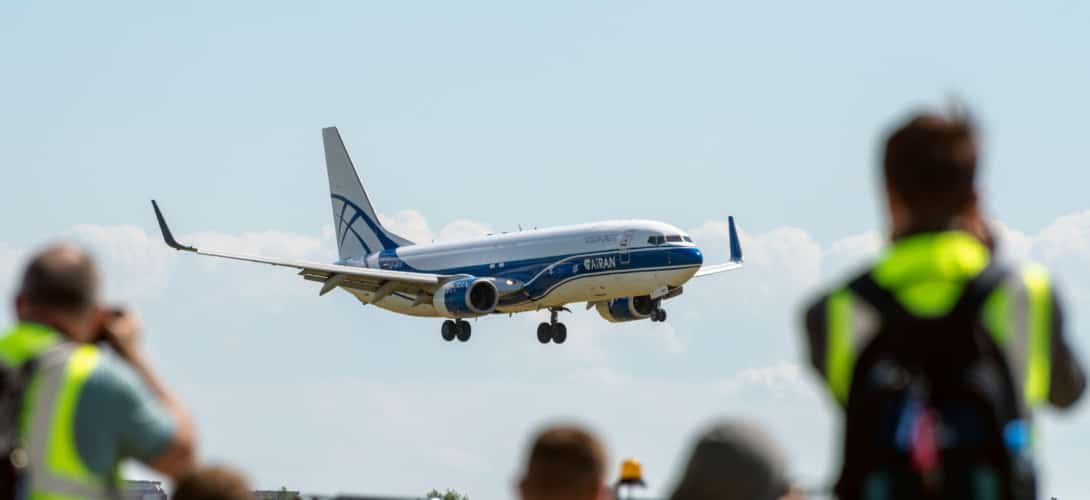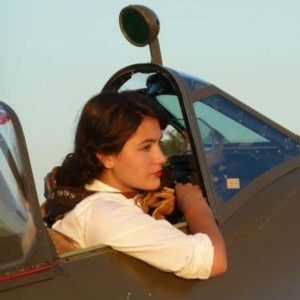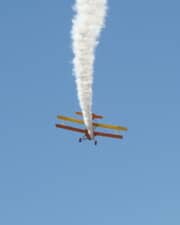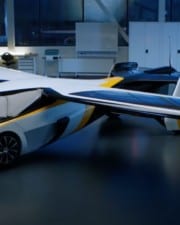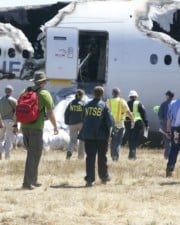Is it a bird? Is it a plane? Who knows! Identifying planes from the ground can be very tricky when so many of them look so similar. So how do airplane spotters do it with such confidence and accuracy? Read on to find out how you can crack the code too.
In pre-internet times, the only way to identify a winged machine was the Mk 1 eyeball, but today things are much easier for budding plane spotters. With websites and apps such as FlightRadar24 and Planefinder, a simple zoom in on the map will reveal all.
But there are a few different ways to access this information. So whether you prefer high-tech or the old-fashioned way, here are some handy tips on the best ways to identify planes flying overhead, both online and offline.
Flight Tracker Websites and Apps
With the capability to display thousands of planes around the world simultaneously, websites and apps such as FlightRadar24 make plane spotting easier than ever before.
There are a few different providers out there and most of them work in the same way, but as FlightRadar24 is the world’s most popular flight tracker app, the following instructions will use that application as an example.
1. FlightRadar24
All you will need for this method is a smartphone, tablet or laptop with access to the internet.
Step 1: Open your selected flight tracker
Download the FlightRadar24 app onto your smartphone or tablet or enter the URL into your web browser. Whether you are using the app or a web browser, the method to use them is the same. Whilst FlightRadar24 does offer premium plans (at a cost), the basic free mode allows you to find out most things you would like to know.
Step 2: Find your location.
The homepage should show you a large map, already displaying yellow icons to represent various planes and helicopters near you. Using the mouse, you can drag the map to your current location or you can enter a nearby airport in the search bar.
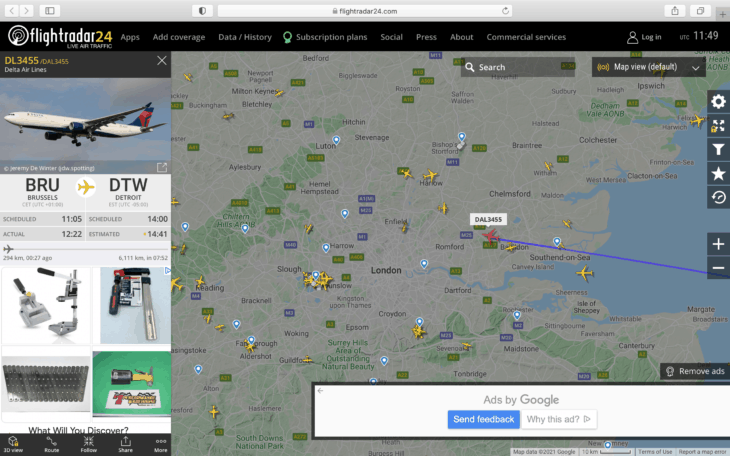
Step 3: Click away!
You should now have a selection of yellow planes and helicopters on your screen. In default mode (Map View), once you click on an aircraft its associated information should appear on the screen. But if you click on Multi-select mode, you will be able to look at multiple aircraft simultaneously.
There are of course additional features. There is also the option to superimpose local weather on the map and also a ‘playback’ feature to look at flights from the past 7 days, if there was one particular flight you wanted to inspect.
2. VR mode (App only)
FlightRadar24 developed a smartphone application which makes it possible to identify flights using virtual reality. Let’s walk through the steps to see how it works.
Step 1: Click AR on the top left-hand side of the screen.
You will receive a message about your phone’s compass behavior, which you can dismiss.
Step 2: Point and shoot
You can now point the phone’s camera to the plane in question. It is worth noting that you don’t even have to be outside to do this. When I gave the app a whirl, it was even able to detect a helicopter on the other side of my kitchen cupboard!
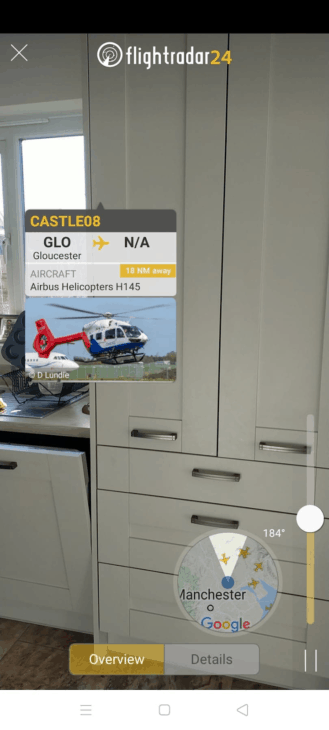
3. Siri
For readers with Apple smartphones, there is an even easier method to get this information; you can just ask Siri!
By simply asking ‘Hey Siri, what planes are flying overhead?’, your smartphone will present you with several charts of information. The down-side of this method is that Siri’s data relies on where the airplane is supposed to be. So you may not be able to see the plane listed on the chart, although it is likely very close by.
Although the information format is perhaps not the most digestible, for ease of access, this method is as easy as it gets.
How Do Flight Trackers Work?
These tracker apps provide so much information it is almost scary and it seems like a lot of work for some intern at a flight tracker company to be gathering! But thankfully for interns all around the world, this information is automatically generated by the aircraft themselves.
Planes flying overhead transmit their GPS position and other parameters from their onboard ADS-B transponder (Automatic Dependent Surveillance – Broadcast). In addition to position info, this machine also transmits parameters such as speed and selected altitude, so that us mere mortals on the ground can get hold of all the interesting information we love to know.
This transponder also transmits this data to ATC, so what users see is not all that different to what controllers may be looking at the same moment.
But you may notice that these apps display much more information than those mentioned above. In addition to what the transponder provides, users can determine airplane tail numbers, aircraft type, destination and even recent photographs taken of the same plane.
Identify By Sight
Identifying planes by sight may sound tricky when they’re up to 6 miles away from you, but a pair of binoculars and following these simple steps can make the process much easier.
Step 1: How many engines does it have, and where are they?
If you can see anything more than two engines on the silhouette above, this can whittle down your options pretty quickly. If the answer is four engines for instance, the plane overhead may be a B747, an A340 or A380.
Engine placement may also offer some clues. Not all planes have their engines slung under the wings; planes with three engines have their third engine mounted on the tail and planes, such as the MD-80, place their engines at the rear of the fuselage.
Step 2: What livery does it have?
Some airliners only operate one type of aircraft in their fleet. On some occasions this may do a lot of the hard work for you. European airliner EasyJet, for example, only operate planes from the A320 family within their fleet. So if you see a bright orange plane you can safely bet that it will be one of those airplanes.
Once the spotter has ascertained this, all they need to do is decide how long the fuselage is to tell whether the plane is the smallest (A319) or the largest (A321) member of that family. The easiest way to tell the difference between the A319 and A320 however, is to count the amount of over-wing exits. The A320 has two emergency exits, whilst the A319 only has one.
But If you want an even greater level of detail, the size of the engine nacelles will reveal whether the plane is carrying NEO or CEO engines.

Step 3: Is it a jet or prop-driven plane?
Whilst jets may dominate the skies these days, turboprops still have an important role to play. Looking at the shape of a turboprop’s tail may offer further clues. AirlinerSpotter.com has some handy tips here to distinguish the different types of propeller aircraft.
Step 4: What is the nose shape?
So now you may find yourself looking at a twin-jet. As the world’s most popular airliner configuration, it could be anything. Looking at the shape of the nose can offer further clues to the make of the plane. Rounded noses are usually seen on the A320 family of airplanes, whilst pointed noses can be found on Boeing 737s and Embraer E175s.

Step 5: Take a look at the lights
You may think that spotting at night is near-impossible, but aviation photographer Kok Chwee Sim claims that looking at their flashing strobe lights is a dead giveaway. Two quick flashes, and you’re watching an Airbus; a single white blink, and it’s a Boeing.
Step 6: Windows
Many spotters say the best way to tell the difference between planes is by taking a quick look at the windows. As you can see on the above image, all four planes have different shaped cockpit windows.
Boeing cockpit windows are usually slanting upward in a V shape, whereas Airbus windows have a more rounded-square shape. There are indeed exceptions to this, namely the Boeing 787 Dreamliner, which has ‘eye-shaped’ windows and the A350 which has a ‘Zorro mask’.
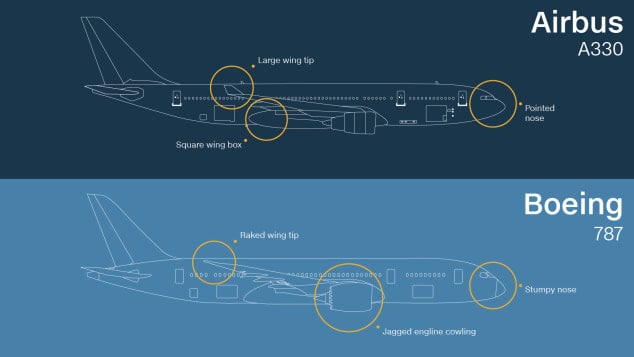
Final step: Practice!
There are of course other tell-tales such as tail position, wing shape, number of doors, the landing gear, and even the position of the horizontal stabilizer. As with all hobbies, practice makes perfect.
The more frequently you try plane spotting, the easier it will be to tell the difference and know which planes are more common than others. If you’d like to find out more ways to tell airplanes apart, take a look at this article on Airliner Spotter for a number of handy lists.
References ▾
Related Posts
